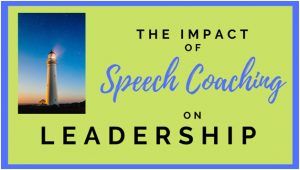What are the best kinds of public speaking classes in NYC?
The best public speaking classes in NYC should be part of a complete public speaking course. For organizations that means public speaking workshops along with New York public speaking classes. For individuals that means one-on-one private coaching with a seasoned public speaking coach. Ideally, any good New York public speaking training should be based on an overarching methodology that has been proven to get consistent results.

Here are some of the essential topics that any speech training should cover:
Fear of Public Speaking –
There are three forces at work whenever any individual finds themselves in the public speaking spotlight: the energy of attention, the sense of judgment, and the fear of consequences. Most people lump them all together and call it “nerves”. That nervous feeling is actually a reaction to the sudden awareness of the three-headed monster coming toward you. It sounds like a fantasy but these forces are real – and ever-present. In order to tame the beast, you must look at the three heads separately.
Speech Confidence Building –
A very common goal in business is to develop a more authoritative voice. In order to speak with authority, you first have to consistently breathe with authority. Most people just don’t breathe very well. They don’t realize that their breath is their vocal fuel. It seems pretty obvious that you need more breath when trying to speak louder, but good breath support helps eliminate so many other vocal problems too. It is the key to relaxing your voice so it can sound confident, poised, and authoritative.
Communication Clarity –
We all have moments when we feel like people are not understanding what we’re saying. Consistently feeling that you have to repeat yourself or that you have to explain further can really interrupt the flow of your speech and cause you to lose confidence.
You get the feeling that people are staring as if they’re not following you, only to find out later that your listeners received a different message than the one you intended or that they disregarded altogether the importance of what you said. You notice that there is seldom any follow-up engagement after you speak. You sense a lack of connection, even though you know your content very well. This is unexpected feedback with undesirable results. You feel like you have to do more, that you have to try harder. The truth is you need to do less – with more precision.
Gesturing For Impact –
Gesturing refers to hand and body movements that support a spoken or unspoken message. Supportive gestures come from following your impulses when speaking. They are always there. You just need to become accustomed to the practice of tapping into them consistently. Luckily, breathing is at the center of learning how to discover your gestures. Varying your gestures is as important as finding them. There is an enormous amount of creativity that goes into exploring the possibilities. The sense of spontaneity will hold your listeners’ attention and make your message more compelling. You will be giving off the perception of being “in the moment”. Holding one gesture until the impulse for the next gesture comes along allows for unspoken continuity in your storytelling.
Slowing Down Your Speech –
Fast talking can be hard for an individual to recognize due to many of the misconceptions there are about speech. Feeling the need to fill up the empty space between words and sentences with sounds can be part of the problem. You may also feel like your brain is just trying to keep up with your mouth. You may anticipate that your listeners won’t understand your message, so you need to repeat it several times at a very fast pace. Many individuals mistakenly believe that the faster you talk, the smarter you sound. There are some who believe that the faster you talk, the more exciting you will sound. At some point, you realize that none of these common justifications for speaking quickly leads to desired results.
Eye Contact For Engagement –
Getting your point across means connecting with your listeners. This connection is initiated through good eye contact. There is a tender balance between too much and too little. The majority of your eye contact, and therefore your attention, is actually given while you are listening – not while you’re speaking. Trying to change this balance due to your desire to really connect can lead to unwanted results. As you might imagine, the balance of eye contact changes based on the number of people you’re speaking with and whether you are in a conversation, in a meeting, or addressing a large group. There are some general rules about what is appropriate, what is creepy, and what is truly powerful.
Watch for role-specific topics in future public speaking classes NYC blog posts. It may seem like public speaking training is a huge mountain to climb. Luckily, the steps are clear when you have the support of a true public speaking course and the guidance of an experienced public speaking coach.
